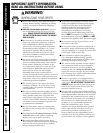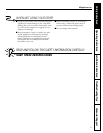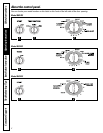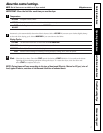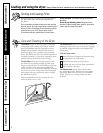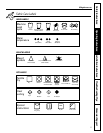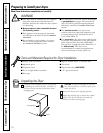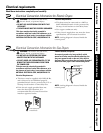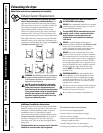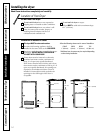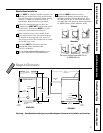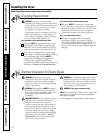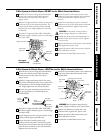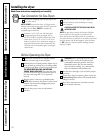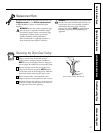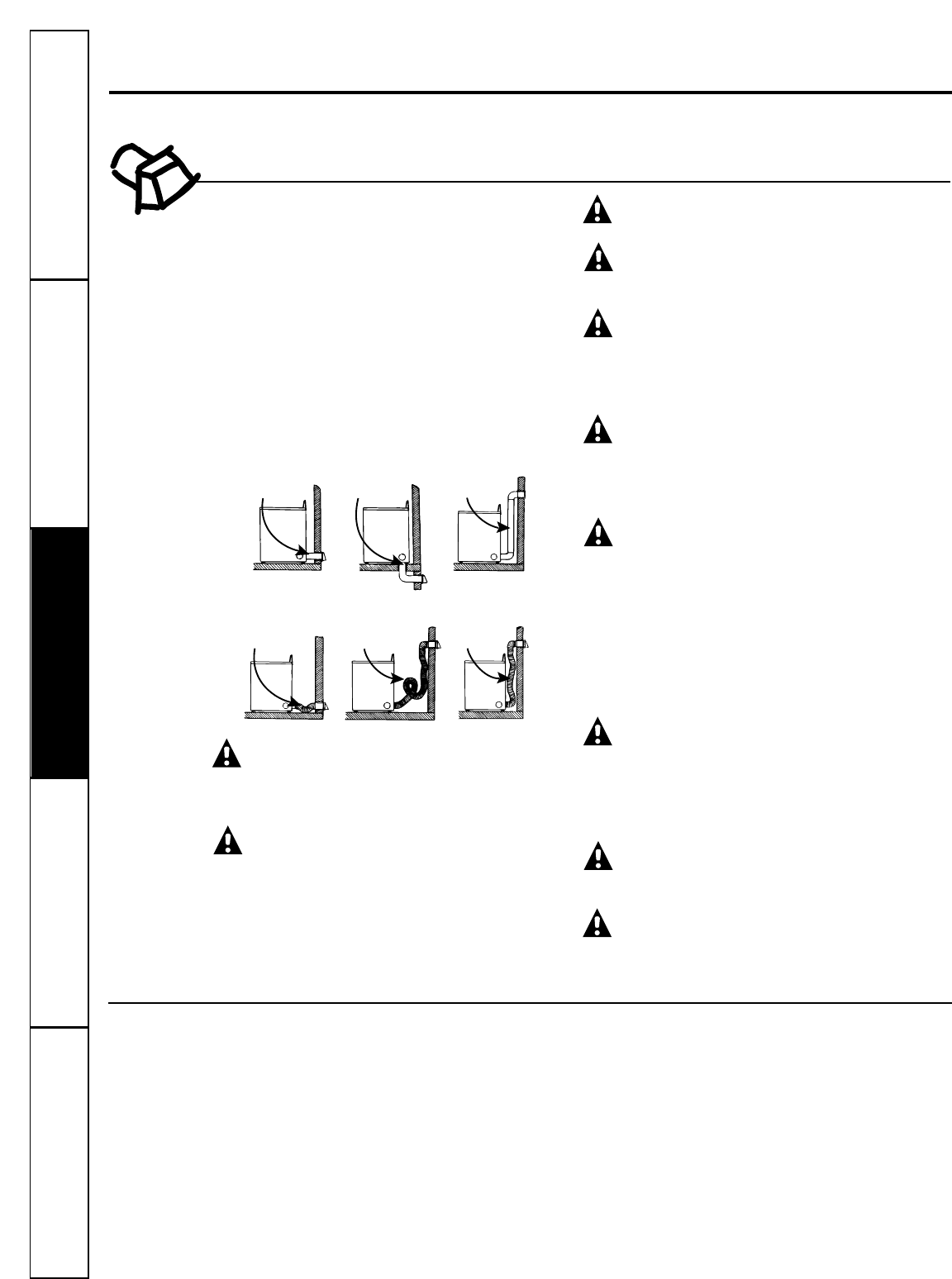
If all rigid metal duct cannot be used, then flexible
all-metal venting can be used, but it will reduce the
maximum recommended duct length. In special
installations when it is impossible to make a
connection with the above recommendations, then
UL-listed clothes dryer transition duct
may be used as
transition venting between the dryer and wall
connection only. The use of this ducting will affect
drying time.
If flexible transition duct is necessary, only UL-listed duct
identified for use with clothes dryers is approved.
The following directions must be followed.
• Use the shortest length possible.
• Stretch the duct to its maximum length.
• Do not crush or collapse.
• Never use transition duct inside the wall, flooring,
ceiling or inside the dryer.
• Avoid resting the duct on sharp objects.
• Venting must conform to local building codes.
12
Use only 4
″
(10.2 cm) diameter (minimum) rigid metal
duct for best performance, or flexible metal duct.
Use
approved vent hood which has swing-out dampers
that open when the dryer is in operation. When the
dryer stops, the dampers automatically close to
prevent drafts and the entrance of insects and
rodents. To avoid restricting the outlet, maintain a
minimum of 12″ (30.5 cm) clearance between the
vent hood and the ground or any other obstruction.
If all rigid metal duct cannot be used, then flexible
all-metal venting can be used, but it will reduce the
maximum recommended duct length. See
Additional
Installation Instructions
following.
WARNING: The following are specific requirements
for proper and safe operation of your dryer. Failure
to follow these instructions can create excessive
drying times and fire hazards.
DO NOT use plastic flexible duct to exhaust the
dryer. Excessive lint can build up inside exhaust
system and create a fire hazard and restrict air
flow. Restricted air flow will increase drying times.
If your present system is made up of plastic duct or
metal foil duct, replace it with rigid or flexible
metal duct. Ensure the present duct is free of any
lint prior to installing dryer duct.
The dryer exhaust system MUST BE EXHAUSTED
TO THE OUTSIDE of the dwelling.
DO NOT
allow combustible materials (for example:
clothing, draperies/curtains, paper) to come in
contact with exhaust system.
The dryer MUST NOT be exhausted into a gas vent,
chimney, a wall, a ceiling, a common duct with a
kitchen exhaust or any concealed space of a
building which can accumulate lint, resulting in
a fire hazard.
DO NOT
exceed the length of duct pipe or
number of elbows allowed in the
Maximum Length
charts. Lint can accumulate in the exhaust
system, plugging the system and creating a fire
hazard, as well as increasing drying times.
DO NOT
screen the exhaust ends of the vent
system, nor use any screws or rivets to assemble
the exhaust system. Lint can become caught in
the screen, on the screws or rivets, clogging the
duct work and creating a fire hazard as well as
increasing drying times. Use an approved vent
hood to terminate the duct outdoors, and seal
all joints with duct tape. All male duct pipe
fittings
MUST
be installed downstream with
the flow of air.
EXPLOSION HAZARD.
Do not install the dryer
where gasoline or other flammables are kept
or stored. If the dryer is installed in a garage,
it must be a minimum of 18″ (45.7 cm) above
the floor. Failure to do so can result in death,
explosion, fire or burns.
Provide an access for inspection and cleaning of
the exhaust system, especially at turns. Inspect
and clean at least once per year.
Do not obstruct incoming or exhausted air.
Correct
Incorrect
Do
Do
Do
Don’t
Don’t
Don’t
Additional Installation Instructions
Exhaust System Requirements
Exhausting the dryer.
Read these instructions completely and carefully.
Consumer Support Troubleshooting Tips
Operating Instructions
Safety InstructionsInstallation Instructions



